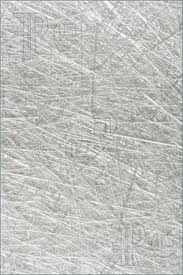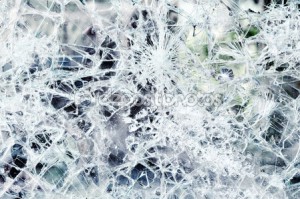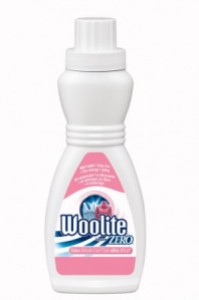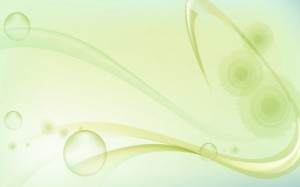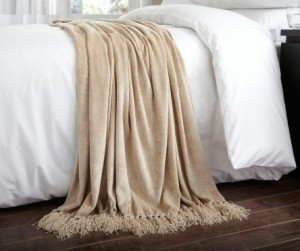My Reviews en Bref are always for scents that, for whatever reason, may not warrant one of my more exhaustive, detailed assessments. This time, it’s for the brand new Serge Lutens‘ fragrance, Laine de Verre, which was released in February 2014.
Laine de Verre is an eau de parfum created by Christopher Sheldrake, and the third in Serge Lutens’ Eaux series. A number of people have described the L’Eau (or Water) series as anti-perfumes, and I think that’s quite accurate. It is always one of the many reasons why I struggle with Laine de Verre, a perfume inspired by fiber-glass. Yes, fiber-glass or glass wool insulation, and no, I’m not joking.
The Serge Lutens website describes Laine de Verre in the usual abstract terms:
It is only after he had been penetrated by the winter that, laying down his arms, the Lord of Glass came to place
at the feet of the Lady of Wool flowers and ferns which had frosted on him.
Luckyscent has a much more detailed olfactory assessment, along with their guess at Laine de Verre’s notes:
A fragrance named after an insulating material? That’s what “laine de verre” means: glass wool. […] His third offering in the Eaux series expresses “a domestic quarrel between my feminine and my masculine” sides, the maestro explains: the Lord of Glass, offering the ferns and flowers etched on his body by frost to the Lady of Wool.
The result is as playfully weird and avant-garde as you’d expect, with a huge aldehydic burst in the top notes – the odorant equivalent of orange soda pop bubbles fizzing in your nose. A whiff of ozone, the slightest hint of metal-tinge rose… There are shards of glass in that ball of mohair wool!
But just when you’re shivering, the “wool” half of the equation kicks in, or rather, rises in a fuzzy haze of musk and cashmeran – one of the most attractive and complex synthetic notes, musky, woody, ambery with comforting a hint of dustiness…
[Notes]: Citrus notes, aldehydes, musks, cashmeran.
I don’t agree with their characterization of the perfume as a whole, but I think their description of cashmeran is quite accurate given how the synthetic manifests itself here. As for the note list, I don’t think it is complete, especially as they themselves mention roses. They’re right, there is a very clear floral presence that lurks about Laine de Verre’s edges. It is a pale, watery, pink rose, and it is joined by other notes which that list omits as well. Very synthetic notes….
I’m going to say this as candidly and bluntly as possible, upfront: I’m the wrong target audience for a “fragrance” like this. Laine de Verre is about as much “me” as I am Marilyn Monroe or Vladimir Putin. There was always zero chance that I would like it, and I knew that from the start. I don’t like aldehydes, I can’t abide white musk, I have very limited tolerance for synthetics, and absolutely none for synthetics in massive, walloping, high doses. I don’t enjoy scratchy fiberglass, or metallic textures. I also can’t fathom the whole concept of spending a lot of money on a perfume that doesn’t smell at all of perfume, of a fragrance that is intentionally made to be an “anti-perfume.” With a niche price tag to boot. I simply cannot bear any of those elements, individually, let alone all combined into one. Which is perhaps why Laine de Verre was essentially a scrubber on me from the very first moment, though I actually stuck through with it to the bitter end.
Laine de Verre opens on my skin with a Wagnerian level of aggressive, soapy aldehydes. They are cold, icy, and definitely manage to convey the sensation of scratchy, glass and metallic wool shards that pierce you through the nose. One reason why is the almost equally aggressive dose of synthetic, clean, white musk. In the trail of the dominant two notes comes a bright, fresh, lemony aroma, along with a nebulous, elusive hint of floracy that feels very dewy and watery. Dust lurks in the corners, next to a sense of dry woodiness, though both are extremely subtle at this point. The whole thing feels very gauzy and translucent in colour, but extremely sharp and strong in terms of the actual notes. In fact, every single time I smell the icy cocktail, I experience a searing pain through my head, and it takes only 5 minutes for a powerful headache to be my constant companion. That clean, white musk is just a killer.
The aldehydes are interesting, at least on an intellectual level and at first. They initially create a very classique, slightly elegant, old-time, vintage feel to the scent, especially in conjunction with the sharp, crisp, lemony notes and the hint of something rosy. The aldehydes truly smell a lot more like actual fizzy molecules in the opening minute than anything else, but it takes less than 2 minutes for the soapy undertone to rise to the top. Before a full 3 minutes have passed, Laine de Verre takes on a definite “Woolite Delicates” aroma. I know because I went to check the bottle in my laundry room. The nebulous floral aroma is different, and Woolite doesn’t have the zesty citric element, but there is no doubt in my mind: my arm was reeking massive amounts of something not too far off from Woolite.
At first, Laine de Verre’s soapy, clean detergent smell bore the same sort of delicacy that Woolite has, but that doesn’t last for long. Exactly 15 minutes into the perfume’s development, the Woolite turned into concentrated Tide laundry cleaner. Specifically, the HE concentrated version with Febreeze. I know, because I own that too, and I compared the Lutens fragrance torturing me on my arm with the bottle in my laundry room. Tide has a much more aggressive, thickly soapy aroma than the more gentle Woolite Delicates, and Laine de Verre was painfully close. Its olfactory bouquet also wasn’t particularly helped by the slightly dusty quality that lurks in the perfume’s background, along with an abstract, dry woodiness.
Both of them are a bit of a contradiction to the very liquidy, wet feel to Laine de Verre. Honestly, I wouldn’t be surprised if the perfume also contained Calone, because there is a very aquatic nuance to Laine de Verre. It helps underscore the very designer feel to the scent, as if it were some sort of distant Acqua di Gio relative, or a more expensive version of the Clean brand of fragrances with their focus on white, laundry-based anti-perfumes. None of this is a compliment in my eyes, by the way….
Laine de Verre is quite potent at first, but the perfume also feels very gauzy in weight. The sillage only wafts about 2-3 inches at first, then drops at the end of the first hour to sit about an inch above the skin. It turns into a skin scent near the end of the 2nd hour, which fully in line with the goal of creating an intimate anti-perfume that is an “Eau” in nature.
Laine de Verre does improve, thankfully, though not drastically. Something happens around the start of the second hour where the aggressive quality of Tide laundry detergent softens, and the perfume takes on a more balanced, elegant feel. It feels like a super-light crystal, if that makes sense. It is still painfully soapy on my skin with a sharp, clean, white musk, but I can see how some people might now see this as a very elegant scent. An olfactory version of minimalistic, cubist art, perhaps.
I know the woman who would wear this, and it would probably be one of my best friends who is incredibly fashionable but who hates wearing perfume. She never does — ever — though the last time I saw her she casually asked what I would recommend were she ever to change her mind. Something minimalistic, sleek and elegant that wasn’t really perfume. I had no suggestions for her then, because everything I considered seemed too much like actual fragrance, no matter how light or fresh. Now, though, I finally have a name. Laine de Verre is perfect for someone who doesn’t want to smell of anything at all, while simultaneously giving off some sort of indescribable, elusively intangible, elegant vibe to match her sleek, streamlined, elegant clothes.
Laine de Verre continues its up and down trajectory. By the end of the 2nd hour, that brief moment of elegance vanishes, and the perfume turns into a skin scent which has progressed from Woolite to Tide to, now, Bounce dryer sheets. It’s all the fault of that damn white musk, which seems to take over. As a whole, Laine de Verre is a soapy, vaguely floral, dry scent with strongly synthetic “clean” notes.
Then, it gets better again, relatively speaking. The impression of Bounce dryer sheets dissipates by the start of the 5th hour, probably because abstract elements of sweetness arrive to dull the white musk. Laine de Verre is a now a nice, delicate, feminine, aldehydic floral musk. I can’t easily pinpoint the flowers. There was always a subtle touch of a dewy, pale pink rose from the start, but is it now joined by jasmine perhaps? There is something sweeter and deeper that goes beyond the rose, aldehydes and cashmeran wood accords, but it’s so muffled and muted that it’s hard to distinguish. In fact, even the rose and wood elements are hard to detect from afar, as everything is blended quite seamlessly together. None of it is my cup of tea, but at least it smells relatively elegant from afar.
The one thing I can genuinely say is quite nice about Laine de Verre is the drydown. In its final 90 minutes, the perfume radiates a softly creamy wood note that is very pretty. There is still plenty of that revolting white musk, but Laine de Verre now has a wonderfully soft texture that feels fuzzy, like the thinnest cream chenille blanket. It’s far too soft to feel even like wool. Actually, it calls to mind fresh cotton wisps that you see in those films about cotton plantations. In its final hour, Laine de Verre is as much about a textural sensation as an actual smell. It is a soft, creamy, wispy, woody scent with clean freshness. All in all, Laine de Verre lasted just short of 8 hours on my skin, thanks mostly to the white musk and synthetics which my skin clings onto like mad.
Generally, in my full reviews, I like to provide other people’s perspectives on a scent, but I rarely do that in the Reviews en Bref and I’m not going to do so here. You can look up the comments on Fragrantica, if you’d like. I’m simply not that enthused about Laine de Verre to spend a substantial amount of my time talking about it, though I find it less horrifying and traumatic than the equally soapy, sharp, synthetic, white musk La Vierge de Fer that was released last Fall. At least this one isn’t priced at $310. Both fragrances, however, are what I personally consider to be “scrubbers.” Serge Lutens is one of my favorite houses, and there is no-one whom I worship more on a personal level than Monsieur Lutens himself, so disliking one of his perfumes is always painful. But I’m afraid I do.
As a whole, I suspect Laine de Verre won’t impress the hardcore Lutens fan who originally fell in love with the house because of its complex, rich signature. The L’Eau series hasn’t been a hit with any Lutens lovers that I personally know, perhaps because “anti-perfume perfumes” seems to contradict the very point of buying a Serge Lutens to begin with. I don’t think Laine de Verre will make the vast majority of them change their minds. However, if you actually hate perfume, you may want to give it a try.

